Despite the near-dominance of disc brakes on modern road bikes, many rim brake wheelset options are still available for road bikes aftermarket – and you don’t have to compromise on modern features.
The best rim brake wheelsets can feature deep-section aero carbon rims and tubeless compatibility. There’s also a full range of freehubs available and you can find wheels specced with ceramic bearings if you want an extra edge.
Aftermarket rims and hubs also serve those wishing to build their own wheels well.
Though the number of options available has diminished, some brands continue to invest in rim brake wheels. Boyd Johnson, CEO of wheelmaker Boyd Cycling, says: “We will continue to offer rim brake wheels.
“Sure, disc brakes are going to be the majority of bikes, and we are also dedicated to producing some great disc brake wheels. However, it is nice to hop on a bike that doesn't make a rubbing noise of a rotor for 20 minutes after riding through a puddle."
In this guide, we outline the best rim brake wheels for road bikes we've tested here at BikeRadar.
You can also jump to our rim brake wheelset guide to read more about rim brake wheelsets and why brands continue to make and develop them.
Five of the best rim brake wheelsets
DT Swiss P-1800 Spline
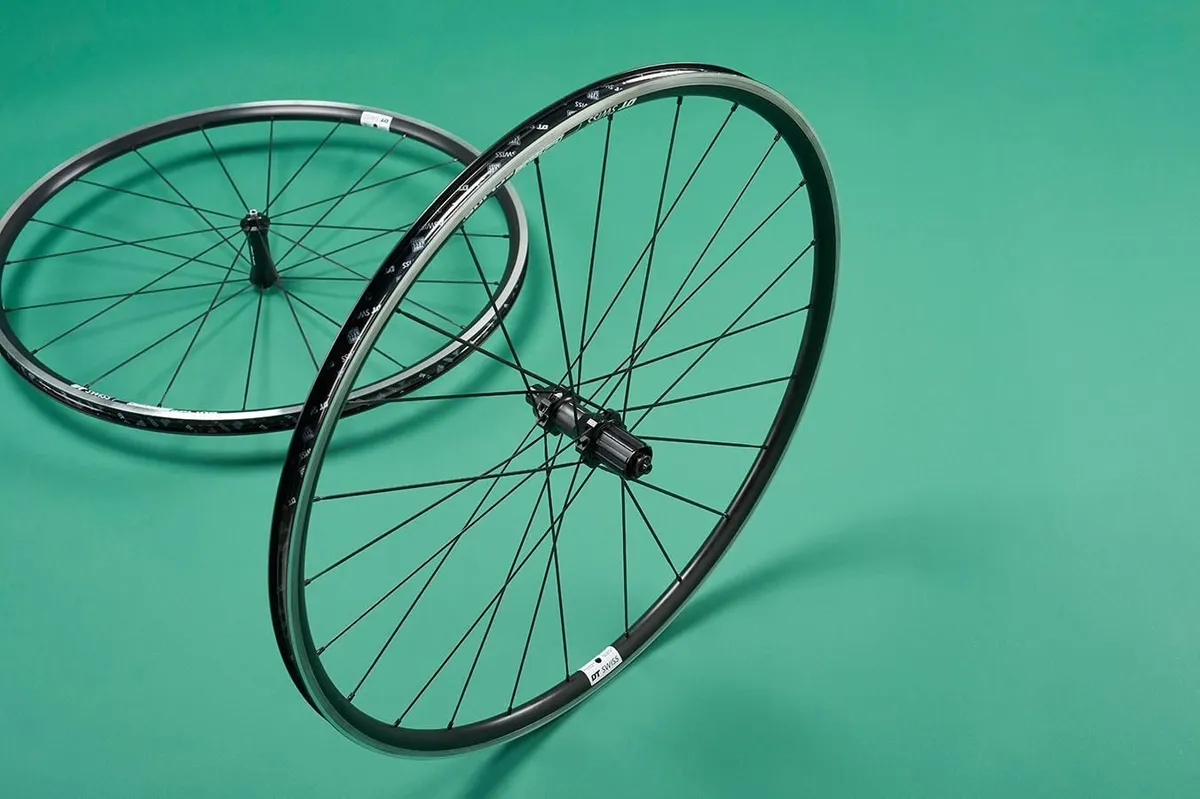
- £335 / $483 / €388 as tested
- Low weight and affordable price
- 1,630g wheelset weight
Weighing only 1,630g a set, DT Swiss' P-1800 Spline alloy wheels are also robust and feature aero spokes.
Their tubeless-ready rims are 17.5mm wide internally, which is a little narrow by modern standards, but fine for the 28mm maximum tyre size you're likely to run on a modern rim brake road bike.
The only minor downside is the use of a pawl freehub rather than DT's ratchet system, which leads to slightly less speedy engagement.
Hunt 4 Season Aero
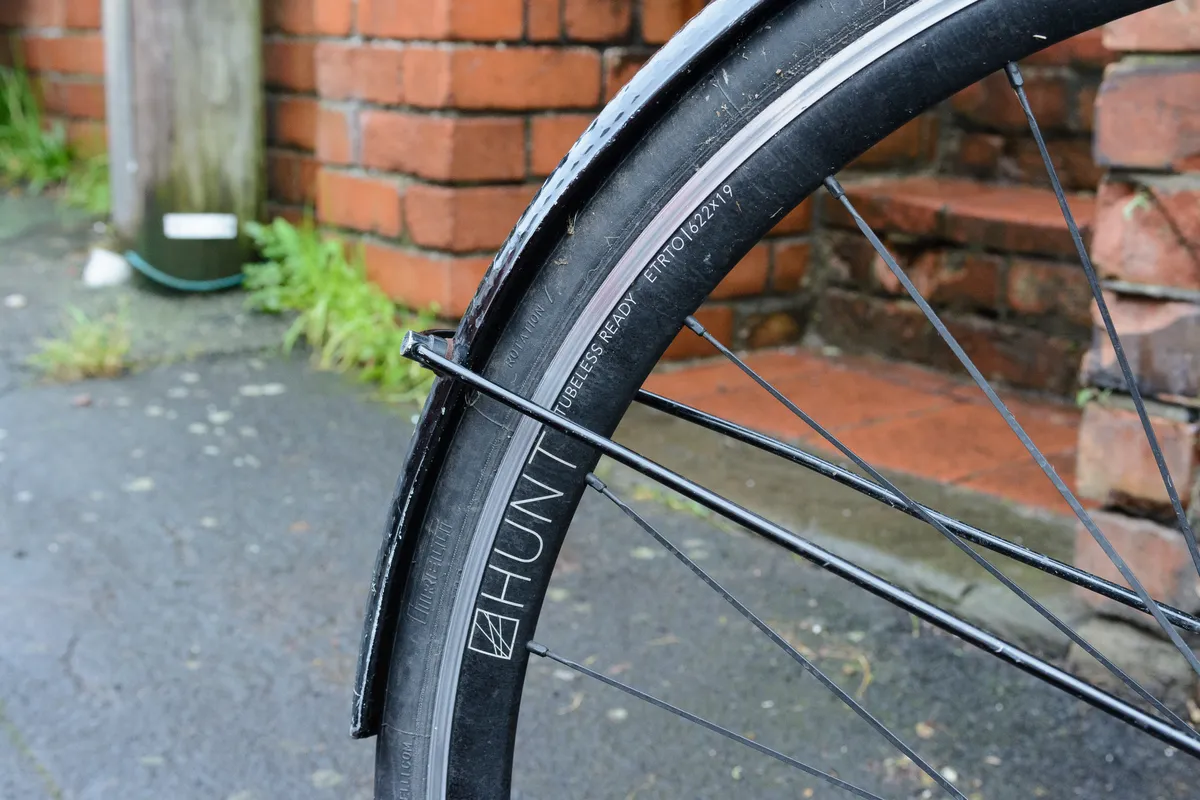
- £369 / $499 / €469 as tested
- High spoke count with brass nipples
- 1,627g wheelset weight
The Hunt 4 Season wheels cope well with winter riding, with extra-sealed bearings helping to keep the worst of the weather out and the grease in. The 19mm internal rim width supports tubeless winter tyres well.
24-front/28-rear spoking leads to a robust build, while brass nipples help fend off corrosion. Hunt threadlocks the nipples to hold them in place and the wheels stayed true over a winter of riding.
Hunt even includes spare spokes.
Vision SC55
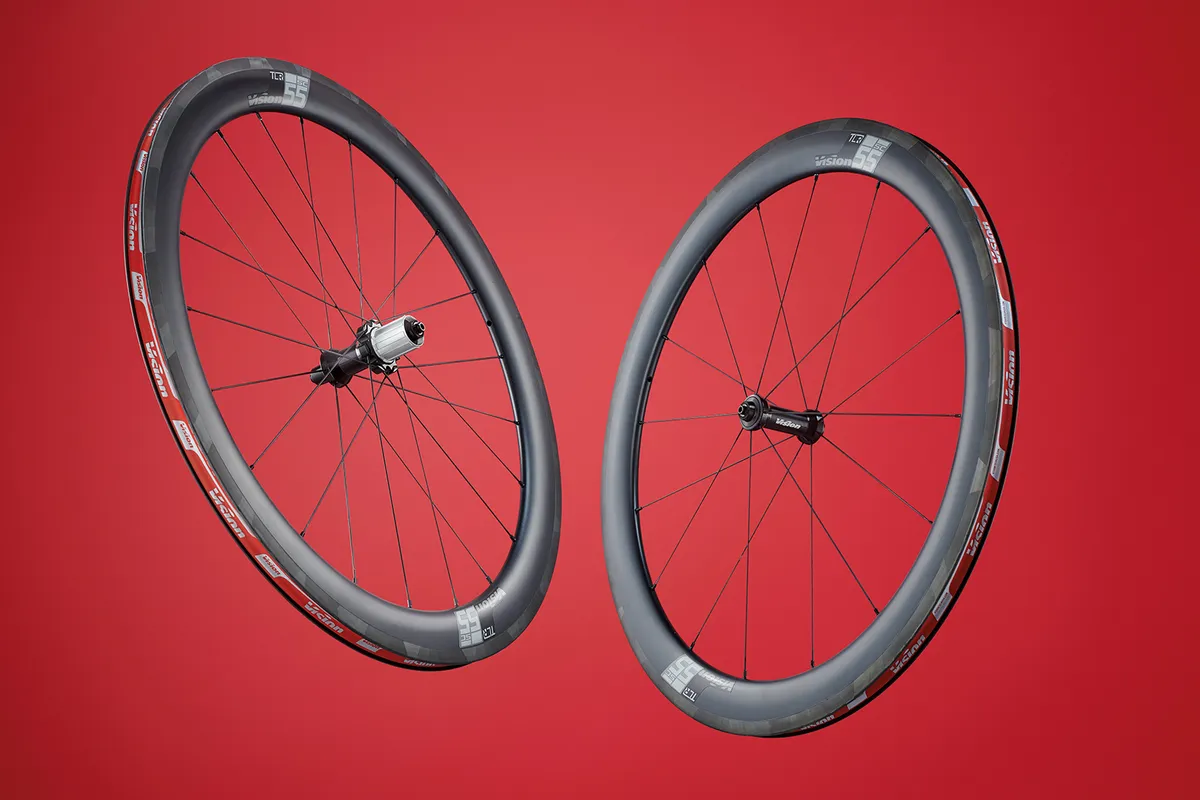
- £1,150 / $1,462 / €1,228 as tested
- 40mm or 55mm rim depths available
- 1,566g wheelset weight
Available for either rim or disc brakes at the same price, the Vision SC55 wheelset offers an affordable, tubeless-ready carbon rim that you can buy in either 40mm or 55mm depths, both with a 19mm internal and 27mm external width. At 1,566g a pair for the 55mm depth, the wheels are competitively lightweight.
We rated the progressive braking and fast ride, which doesn't suffer in gusty crosswinds. On the wide internal channel, 25mm tyres measured 28mm actual width, permitting a lower tyre pressure for a smoother ride.
Giant SLR 1
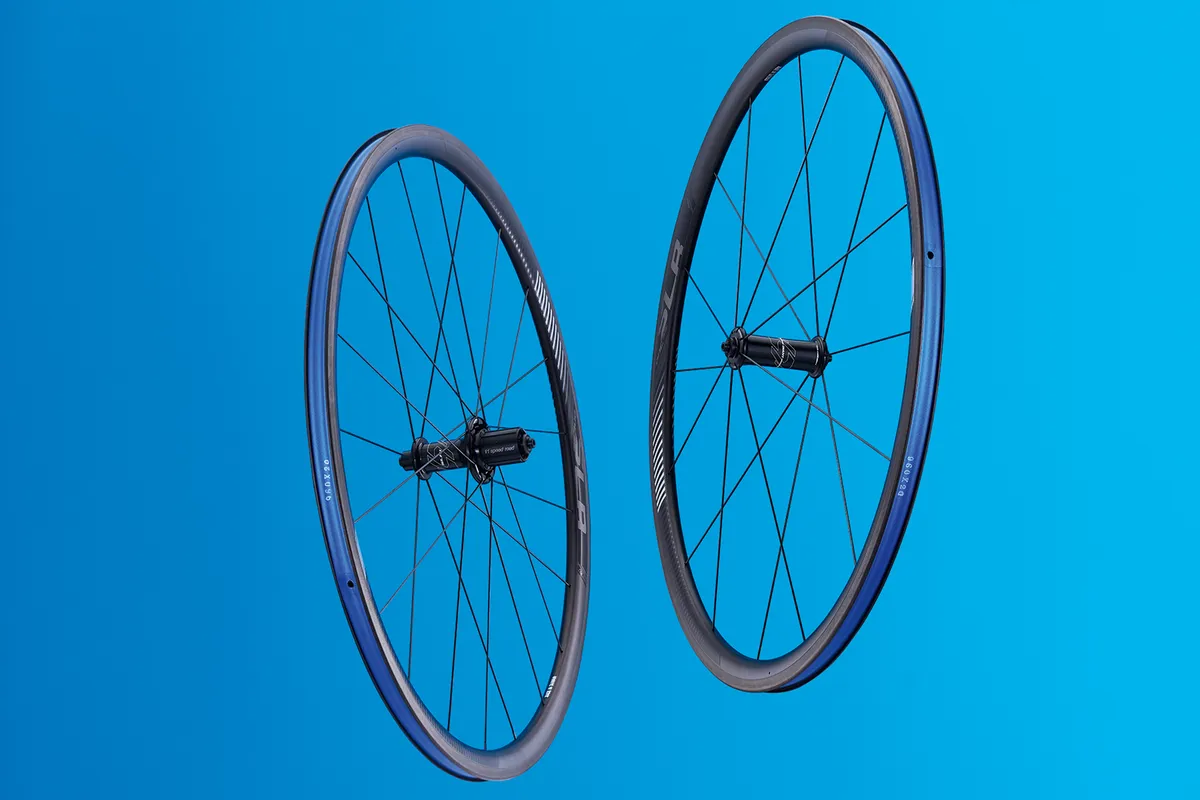
- £1,000 / $1,344 / €1,350 as tested
- DT Swiss hub internals
- 1,730g wheelset weight
With rim tape and valves, the Giant SLR 1 wheelset weighed a competitive 1,463g. They're 30mm deep with a fairly narrow 23mm external / 17mm internal rim width. The hubs include DT Swiss 360 internals, which should prove durable.
There's good stopping power in dry conditions, although it's not so good when it's wet. You save a little weight over alloy rims, however. Although Giant has discontinued this rim depth, the SLR 1 is still available in 65mm depth, with a claimed weight of 1,730g.
Halo Carbaura RC35
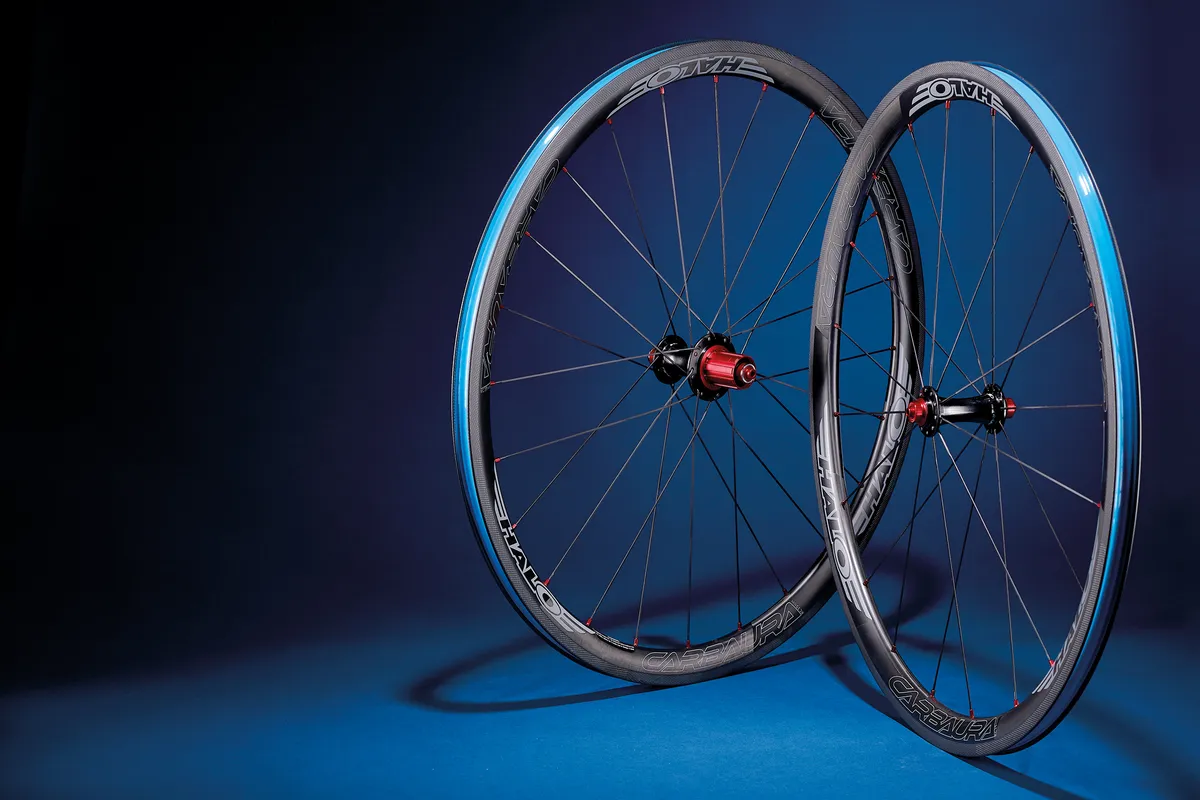
- £1,000 as tested
- Low-profile aero rims are stable in crosswinds
- 1,450g wheelset weight
The Halo Carbaura carbon wheels weigh 1,450g. We appreciated the aero benefits on offer from the 35mm-deep, 19mm-wide rims, which shrugged off crosswinds.
We rated the braking too, which benefits from Halo shipping the wheels with high-spec SwissStop Black Prince brake pads as stock.
Who still makes rim brake wheels?
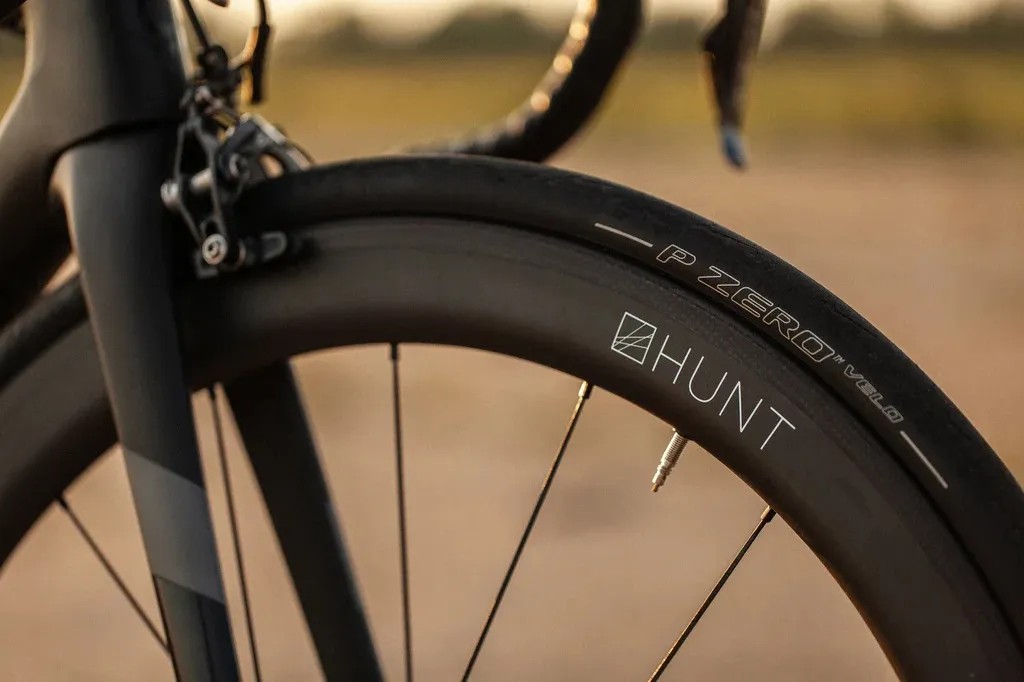
The majority of wheel brands still include rim brake wheels in their catalogues.
As Johnson points out: “There are millions of super-nice rim brake bicycles out there and people need options for those bikes.
“Rim brake bikes were still in mass production until just a few years ago, so for that customer who purchased a very nice bike, we want an answer if they want a great set of wheels.”
Hunt Wheels’ lead product and commercial manager, Patrick Blake, concurs, saying: “There are plenty of riders putting great miles on rim brake bikes. We think it’s important for those riders to have excellent wheel upgrade options, and we’re proud to make [rim brake] wheels that can improve their riding experience.”
During their development, Hunt wind-tunnel tested its rim brake Carbon Aerodynamicist wheelsets alongside its disc brake wheels, an example of how choosing rim brake wheels doesn’t necessarily exclude you from the most modern technologies.
As discussed below, most rim brake wheelsets sold are now tubeless-ready as well.
Even if disc brake wheelsets steal the headlines, almost all wheel brands offer modern rim brake options alongside their disc brake wheels.
Other examples of brands selling rim brake road bike wheels, besides Boyd and Hunt, include Zipp, DT Swiss, Mavic, Campagnolo and SwissSide.
What to look for in rim brake road bike wheels
Many of the considerations when choosing the best rim brake wheels are the same as for disc brake wheels, so take a look at our guide to the best road bike wheels for more advice.
There are a few extra things to think about that are specific to wheels designed for disc brake use though.
Carbon vs alloy
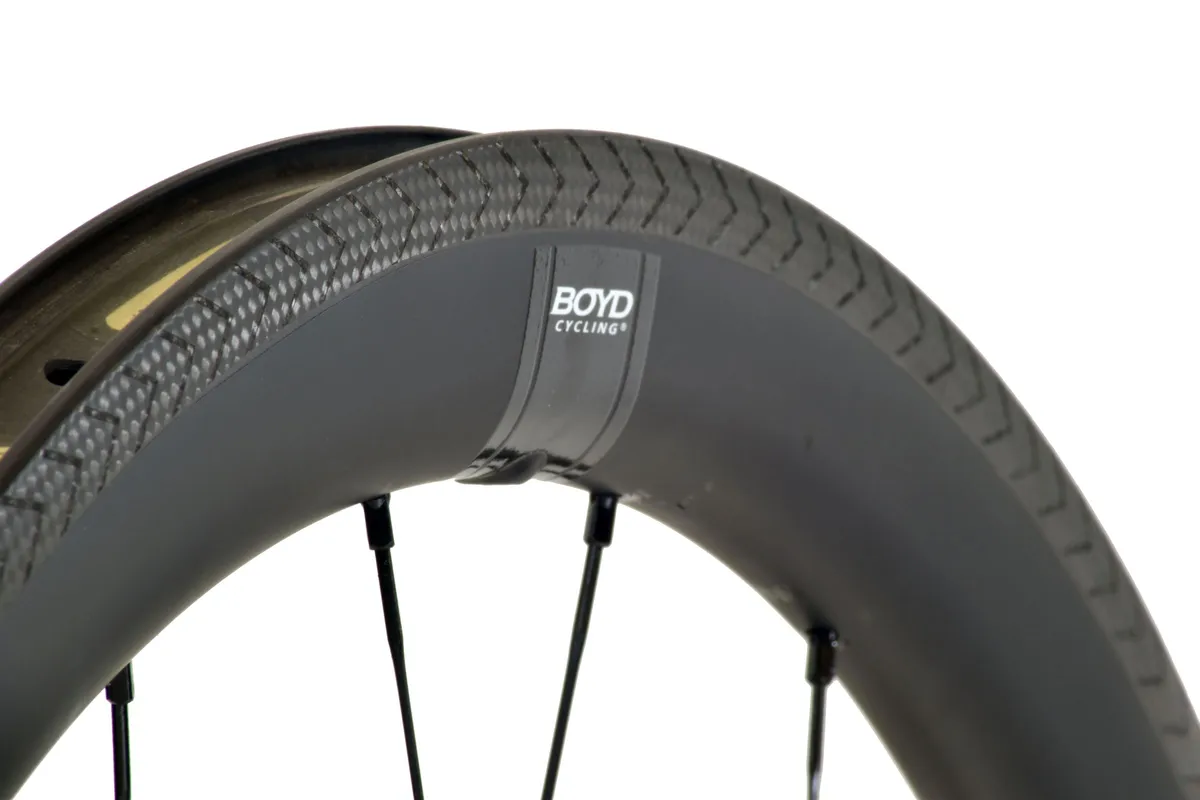
There are plenty of carbon rim brake wheelsets available, as well as alloy ones.
Early carbon rim brake wheels suffered from very poor braking performance in the wet and had a tendency to overheat during prolonged braking.
These issues are less prevalent with modern wheelsets.
Modern carbon rim brake wheelset rims are typically etched, often with a laser, and may incorporate specialist resin to help disperse water from the brake track and enhance wet-weather braking performance.
Brake pads for carbon rims are also engineered to provide effective braking whatever the conditions.
The resin used in newer carbon rim brake wheels has also been engineered such that it will withstand high temperatures resulting from prolonged braking without melting. High TG resins, for example, can withstand surface temperatures in excess of 200ºC.
Nevertheless, if you’re making long fast descents, it’s still advisable to alternate your brake use and try to let your bike run on occasionally to help reduce heat build-up, rather than dragging your brakes (though the same advice applies to disc brakes).
Alloy rims don’t suffer from heat dissipation issues and their braking is less prone to degradation in wet weather than carbon rims.
Alloy rims tend to be heavier than carbon rims though, so they’re typically confined to shallower-section wheelsets, although these may still have an aero-optimised profile.
Rim width
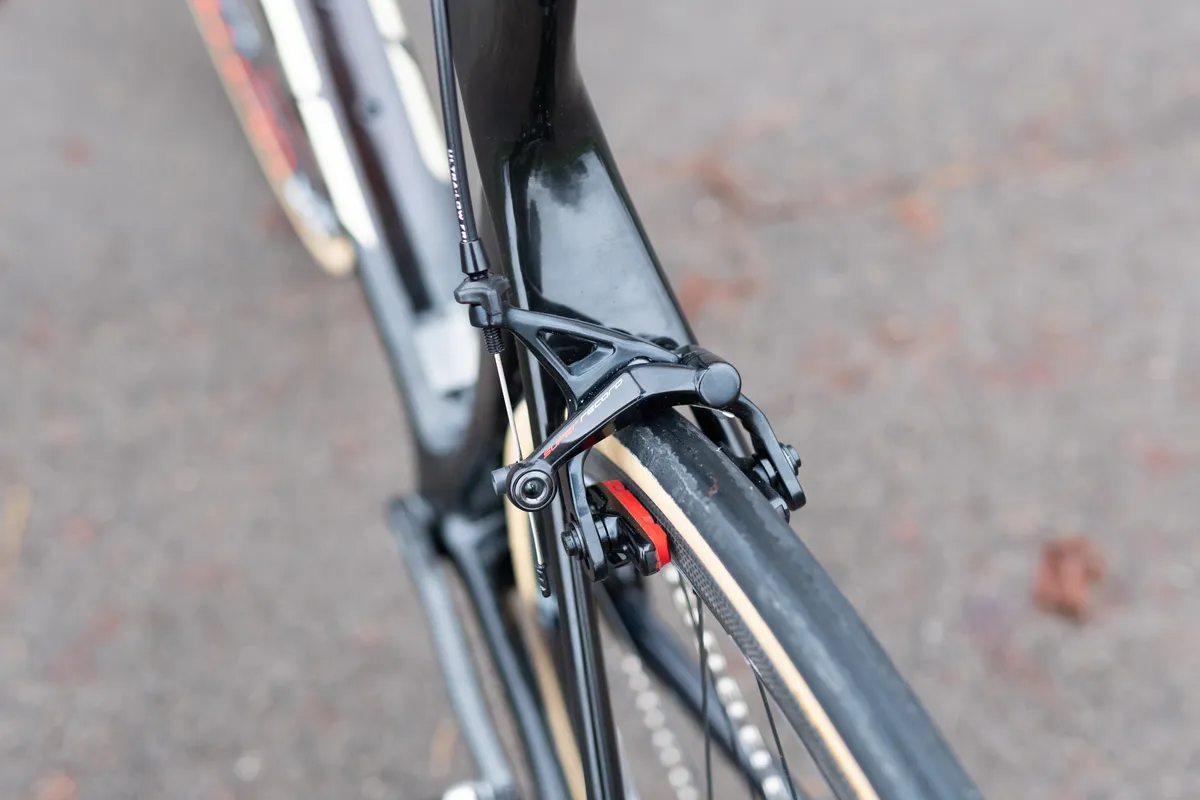
One significant constraint on rim brake wheels is the rim width that can be accommodated by commercially available rim brakes.
Tyre width is also a constraint, so the extra-wide rims and tyres you can fit to many disc brake road bikes can usually not be fitted in a rim brake bike frame.
Shimano Dura-Ace rim brakes, for example, are officially constrained to 28c tyres. They’ll accept external rim widths between 20.8mm and 28mm though.

Hunt and Boyd offer rim brake wheels with internal rim widths between 19mm and 21mm, which they say are suitable for tyres up to 28mm wide.
Boyd Johnson suggests that, in the future, we might see a hydraulic rim brake calliper that can be swapped into a hydraulic disc brake groupset and which might provide increased rim and tyre clearance.
A hydraulic rim brake sat alongside hydraulic disc brakes as part of SRAM’s initial launch of its Red Hydro R 2x 11-speed groupset in 2013, but it has been dropped from subsequent groupset updates. At that time, wide rims weren't commonplace though.
Rim depth
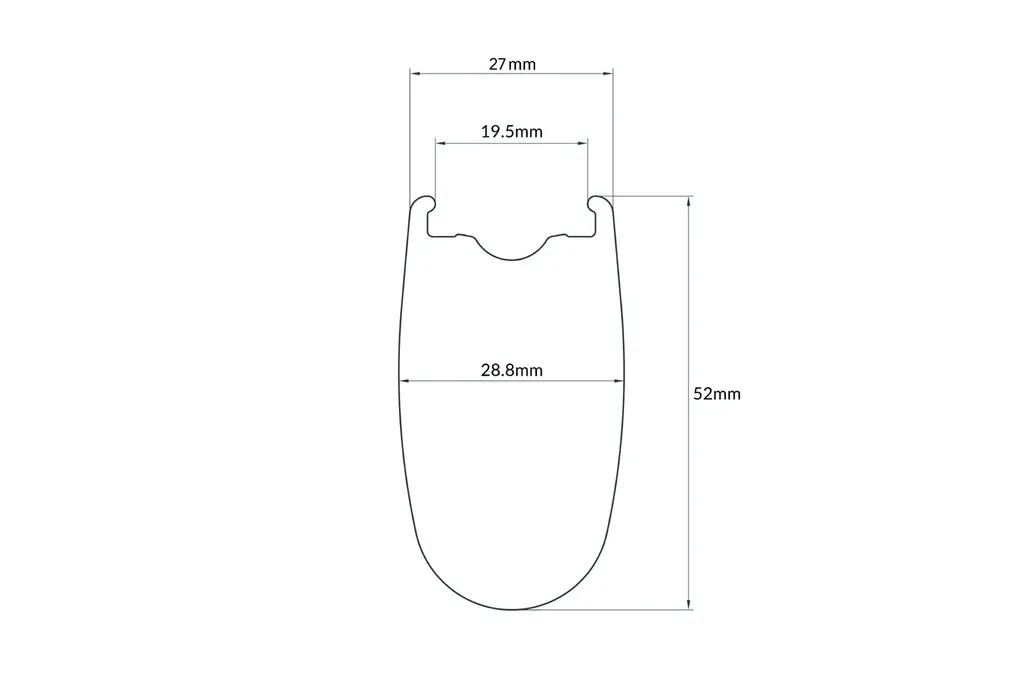
Although brake track width places a constraint on rim brake wheel profiles, there’s no such impediment to a rim’s depth. Thus rim brake wheel riders can benefit from the same deep wheel profiles as used for disc brake wheelsets.
Hunt, for example, offers its rim brake Carbon Aerodynamicist wheelset in depths up to 82mm. Their 27mm external, 19mm internal width at the brake track increases to 29.5mm at the rim’s widest point and they have a modern blunt aero section.
Boyd sells a 90mm-deep rim brake wheel. It also has a disc rear wheel with a rim-brake track, aimed at triathletes and time trialists, as do Mavic and Zipp.
There are also rim brake climbing wheels available with shallower rim depths to save weight.
Tubeless vs clincher
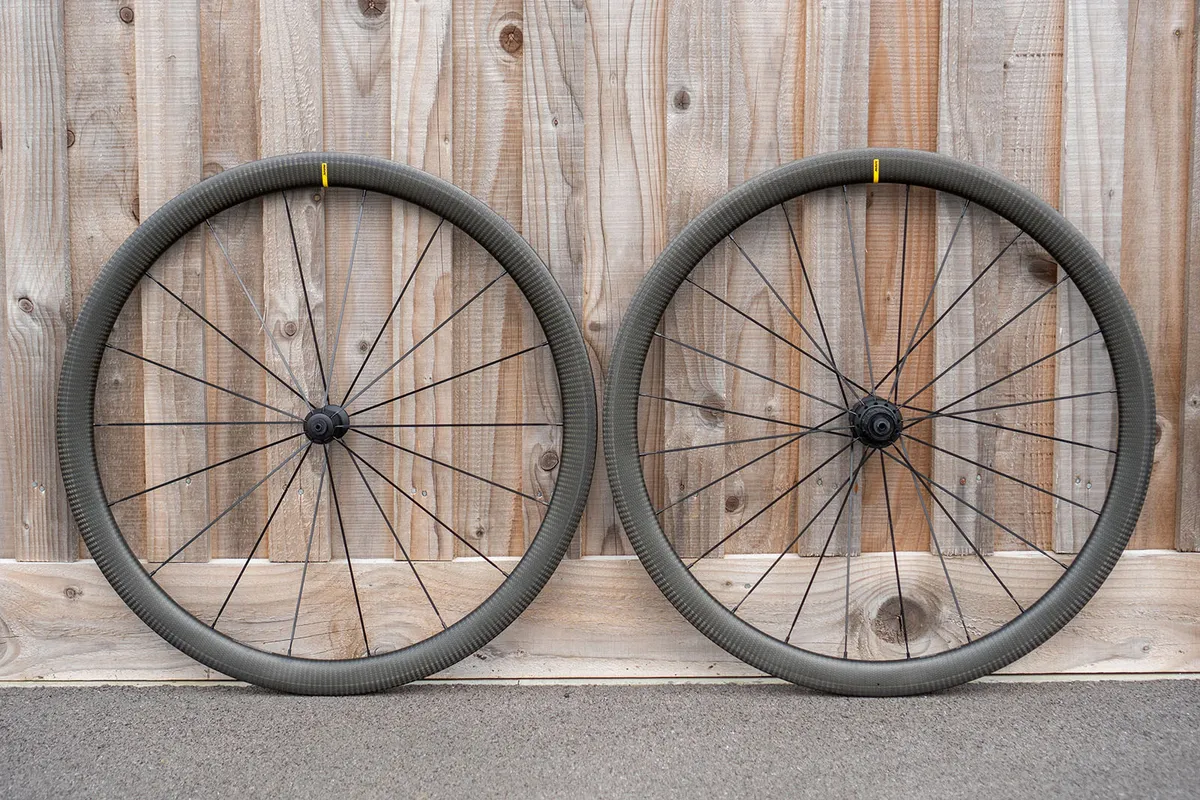
If you’re looking for rim brake wheels, that doesn’t mean you’re held back from the latest wheel trends, including the ability to use tubeless tyres.
As with disc brake wheels, most current rim brake wheelsets are designed to be run tubeless.
Often, you can choose to run a wheelset either with tubeless tyres or standard clinchers with inner tubes. Bear in mind, though, that heat dissipation for carbon wheels run with inner tubes may not be as effective as those run tubeless.
Lightweight latex inner tubes are more prone to failure than butyl tubes at high temperatures.
There are also rim brake wheels sold for use with tubular tyres.
Durability
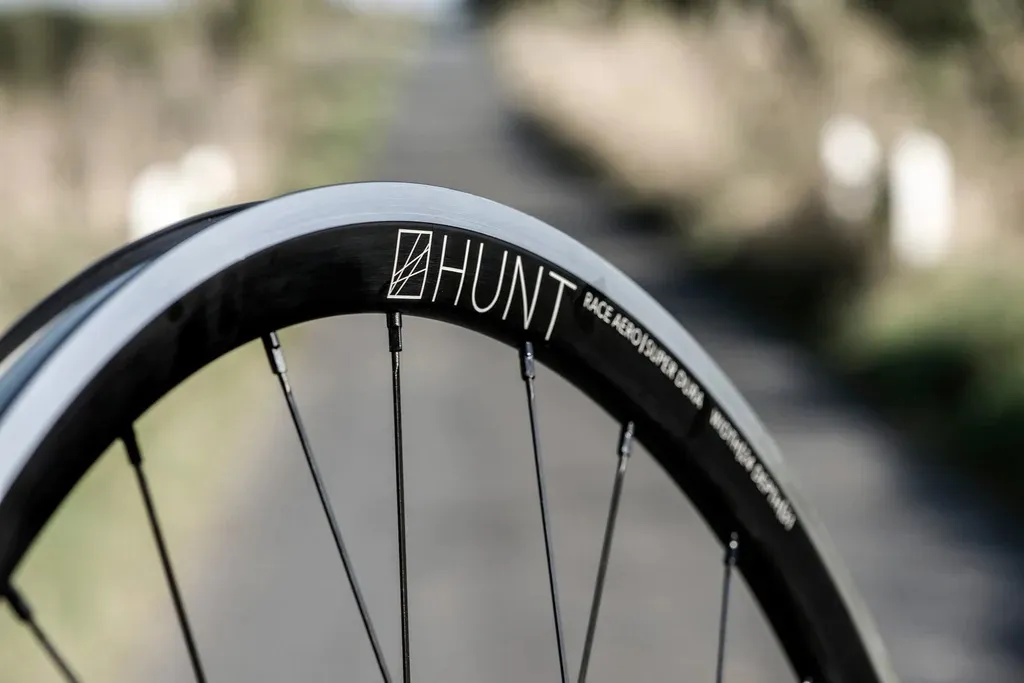
Rim brake wheels, particularly alloy ones, are often designed to withstand heavy use. These wheels can be a good option for commuting, touring and for heavier riders.
There’s less to go wrong and it’s easier to find parts to fix a cable-operated rim brake than a hydraulic disc brake, so rim brake wheels are a good option for ultra-endurance rides or if you’re heading off the beaten track.
Rim brake rims do, of course, eventually wear out, which can often work out more expensive (and more complicated) than replacing a worn rotor or brake pads.
